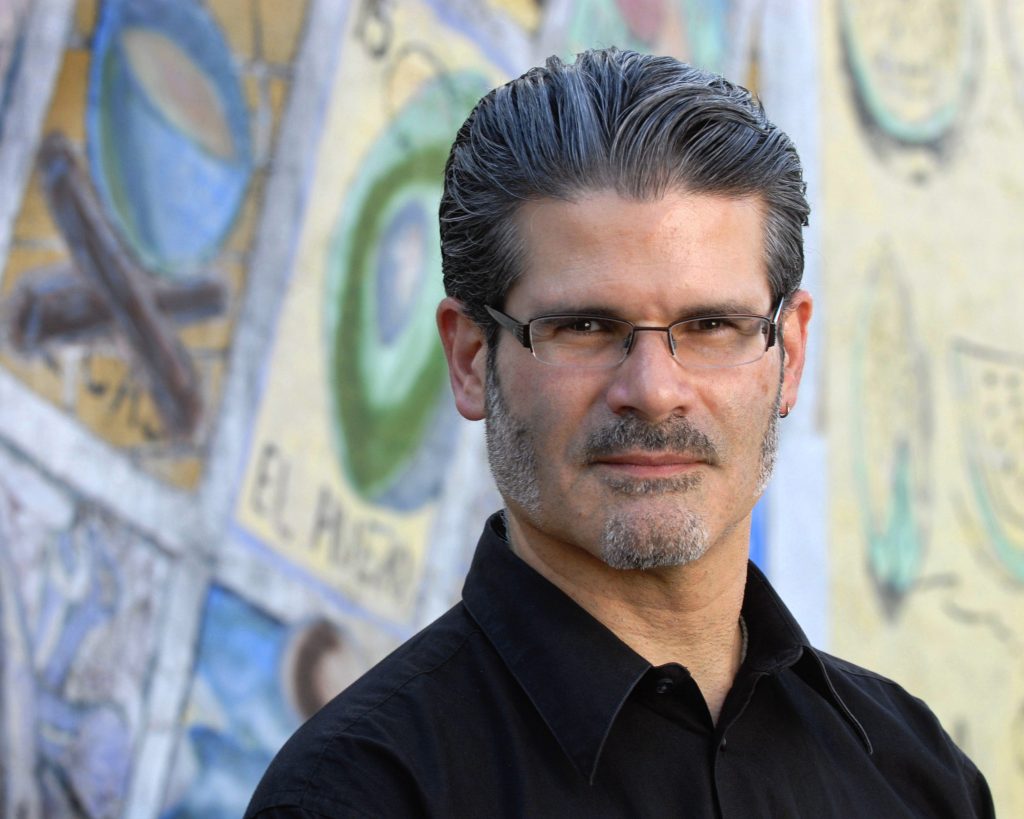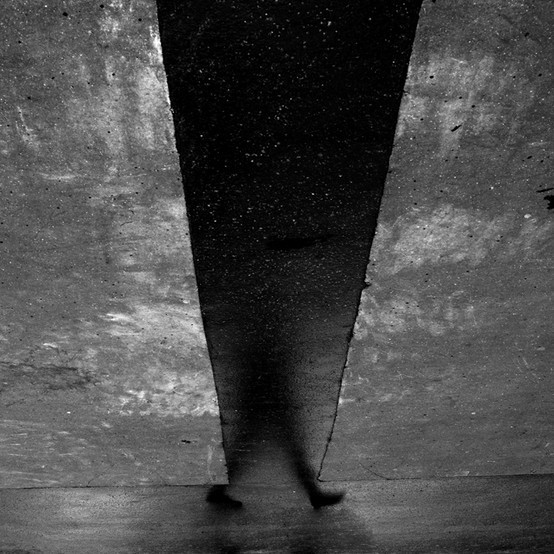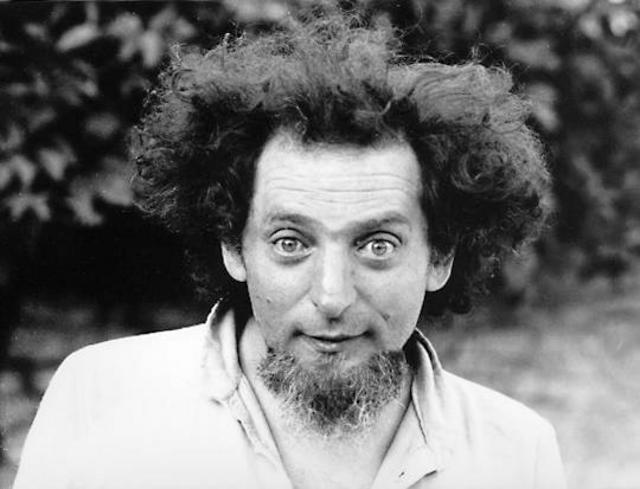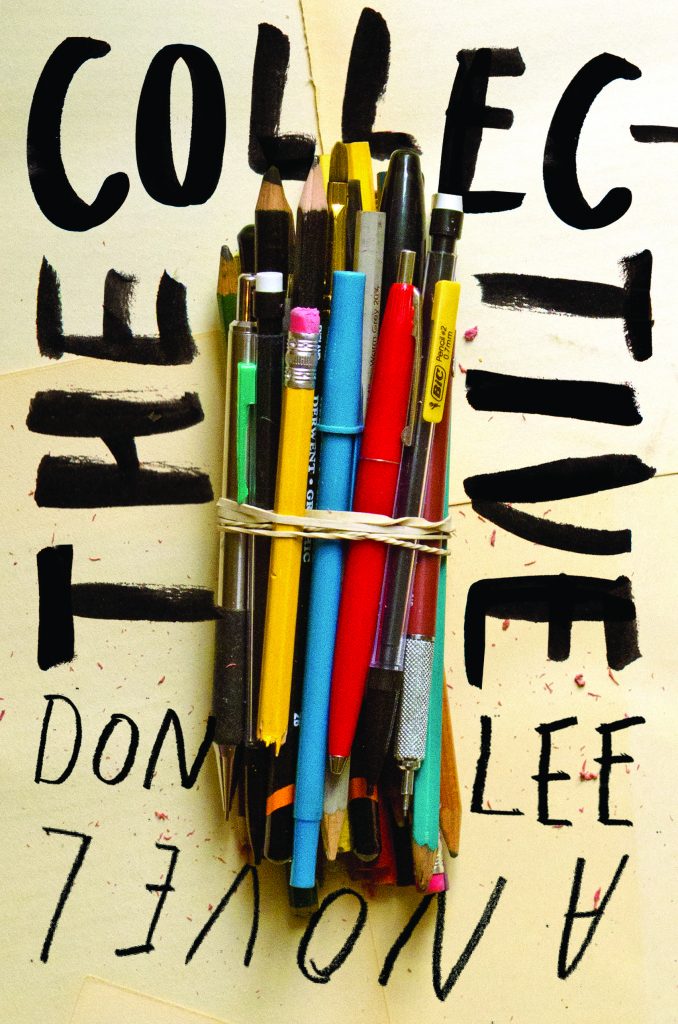Still Nowhere in an Empty Vastness is an odd book of poetry. It is odd, for one, because isn’t quite poetry. Or at least, American Poetry. Let me qualify that: American Poetry by and large is the poem as aesthetic experience – the lyric flight of fancy, the narrative mode of national or personal interrogation. By contrast, Still Nowhere in an Empty Vastness is prosaic, argumentative, and provocatively intelligent. It is not so much an encounter with the Aesthetic as an aestheticized study of encountering the aesthetic – though, more on that later.
Of course, there are American poets writing works like Still Nowhere in an Empty Vastness. For example, the New Narrative Poets of the Bay Area — Dodie Bellamy, Robert Gluck, Kathy Acker, Gary Indiana, Carla Harriman and a somewhat younger generation — Teresa Hak Kyung Cha, Rob Halpern, Juliana Spahr, Dana Ward, and others. Or the individual iconoclastics, Susan Howe, William Carlos Williams, Dale Smith, C.D. Wright, G.C. Waldrep, Charles Olson, and Derek Walcott, H.L. Hix, who do not share any form or school or chronotope, but all take the idea of history and the idea of poetry and the idea of history and poetry seriously. But they are, compared to Still Nowhere an Empty Vastness,either – in the first case, more ecstatic or smutty or incantatory, or in the second, more lyrical or enjambed or involved with the materiality of the archive.
Still Nowhere in an Empty Vastnessis particularly unlike these other books first because it’s a kind of museum object. By which I mean it is an object which tries to approximate the function and experience of a museum. It collects. It catalogues. It organizes experience objectively through displaying objects.Second,Still Nowhere in an Empty Vastness is particularly unlike these other American poetry manuscripts which mix poetry and history in that it tries to extract formal criteria for a poetics of the border. The form of the ‘other’ is an understudied category in American poetry[i].Third, the aesthetic experience of which Still Nowhere an Empty Vastnesscomprises a series of case studies of encountering ‘the other’ in America. For instance, the encounter between Native Americans and the European settler, the encounter between American artists and Mexican art, or the encounter between an English reader and Spanish translation, or the encounter between image and text and sound and installation.
To depart so obviously from convention is to signal rebellion. What is Still Nowhere an Empty Vastnessrebelling against? And what better future is it gesturing towards?
One future Still Nowhere in an Empty Vastness points to is the future of art, not poetry. Still Nowhere in an Empty Vastness begs to be read as an art book and encountered as an art object. Its thirteen chapters are independent. They each address one genre of encounter, between a representative U.S. subject and a representative “South of the Border” subject. The beginning and conclusion of are not summaries or arguments, but manifestos for future ways of reading and writing. Finally, the footnotes and citations and block quotes and basically all allusive devices in Still Nowhere in an Empty Vastness are used in non-normative and even prohibited ways. Still Nowhere in an Empty Vastness is a putatively academic putatively serious book of poetry criticismthat actively flouts MLA or Chicago or Fowler’s or Gardner’s usage. It revels in a kind of pedantic distrust.
Still Nowhere in an Empty Vastness has footnotes on every page. Some of which not only clarify references but also extends and even diverts them. In this it is unlike academic monographs from American university presses(who favor endnotes), and more like the work of 90s Postmodern fiction. For example,The Mezzanine, Wittgenstein’s Mistress, The Third Policeman(not 90s though often cited by people in the 90s), and Infinite Jest. Furthermore Still Nowhere in an Empty Vastness uses full blockquotes – full poems, full translations, full transcripts of interviews.
In a college writing course, Tejada’s quotations, translations, and transcripts would likely be docked as a sign of laziness – a student eager to “let the text speak for itself.” In Still Nowhere in an Empty Vastness, this is intentional, and the effect created is the effect of entering a Museum of poetic artifacts. This is a Lezama Lima poem. This is a Mary Rowlandson Witnessing. This is an Oppen Artifact. This is a poem Oppen wrote in response to the circumstances of his exile. These are the aesthetic precursors for this framed painting of the Hudson River School.
One collegiate way to put it: Tejadapresents poems, theorists, other people (in the form of interviews)rather than re-presents. He shows us the poem. He doesn’t cut it up or take it apart or put it into context.
Here’s an example of a poem that Tejada presents, William Bronk’s Tenochtitlan.
TENOCHTITLAN
I did not go to Coatlicue today,
to her of the writhing skirt of serpents, skulls
suspended at her neck, clawed Mother of the Gods.
Not that it mattered: if we have learned at all
we have learned not to deny the terrible ones
their due; they have it; we are theirs to keep.
But we also learn—not knowing is it fear
or defiance teaching us—not to think
of everything always, sometimes not to think.
Xilonen, Goddess of the Young Corn, of green
and growing, grant us the solace of sweet ears,
soft in the mouth; accept our truant love.
We drink to you, Xilonen, we are drunk
with deep pleasures and a deep need, drunk
with gentleness and the pleasure of gentle needs. (77)
The only commentary Tejada offers for this poem is that it “in particular serves as an invocation to the duality invoked by Coatlicue and Xilonen, two goddesses from the Aztec pantheon.” In my reading, Tenochititlan is a near sonnet describing two possible paths. The first path, “Coatlicue” is a path of fear and being shocked into knowledge. The second path, “Xilonen”, is delinquent, pleasurable, luxurious spring. The poet, on this day, picks Xilonen over Coatlicue, though he’s obviously acquainted with both. What is duality then? Perhaps, it’s being able to bear in mind the choice of either path, at any given day or moment.
That’s myhypothesis. I have never studied the Aztec metaphysics of duality nor does Tejada offer a synopsis of what that might be. Or maybe more appropriate to a book of Still Nowhere in an Empty Vastness’s diction and difficulty, a historiography of conflicting accounts amongst different philosophical primary sources of the Aztec concept of duality. This is a roundabout way of saying Still Nowhere in an Empty Vastness is still obviously a poetry book in one way (despite its literary critical rhetorical posture and its many serious political commitments in an analytical or even Marxist or post-structuralist mode.) It presents poetry. With some allusive commentary, but not enough to unpack it. It sits somewhere between a book of lyrical poetry – say Emily Dickinson’s Complete Poems, and Helen Vendler’s commentary on Emily Dickinson Complete poems. It’s more like going to a museum – in which the object and it’s context (and sometimes criticism) are experienced adjacent to one another. The display and the displayed text.
This is one future that Still Nowhere in an Empty Vastness imagines for poetry. A future where the distinction between art and poetry is more porous. Another tries to imagine a future for both poetry and politics in the Trump era. Basically, what do we do about the Southern Border? What have we done in the past? What have we done as famous artists (Oppen, Crane, Weston, Modetti, etc)? What have we done as ordinary colonial settlers (Rowlandson, Cabeza De Vaca)? What have we done as ordinary foreigners? Tejada does the work of the imagination through case studies – I’ve used this term before – of the different encounters. I use the term case study in reference to the clinical origins of the term. In each of the narratives of encounter Tejada is concerned with in Still Nowhere in an Empty Vastness, he first gives a narrative of meetings between a subject of the encounter and an object of the encounter. The subject could be a doctor and the object a patient, or the subject a TV viewer and the object the media representation of Elian Gonzalez, or the subject Mary Rowlandson, and the object the Native Americans she narrates. There is, in each of these cases a person who does the interpretation, the reading, the proscribing, and another who is interpreted, read, and proscribed to. The case study is this study of the doctor patient relationship as well as a set of clinical observations and suggestions to produce a cure. Or in any case, improve the prognosis. The idea is not all that different from Brecht’s idea of the epic theatre. The director or the writer or the doctors presents a narrative and at the same time equips the reader or the viewer with the analytical tools necessary to be a reasonable skeptic of the narrative. The citational method mentioned above is one way of producing this Brechtian or Freudian distance.[ii]The further references and the addendums produced by the footnotes adduce a secondary and often divergent or skeptical layer of interpretation. But of course, through out Still Nowhere in an Empty Vastness Tejada deploys a number of different analytical devices for the reader. Often in the form of borrowing from a theorist.
The narrative – problem — cure combo most interesting to me, and I think to Tejada, is the concept of the simulacrum. Tejada argues the immigrant is a kind of simulacrum. Certain kinds of simulacrums dissolve other kinds of simulacrums. And some poetries are simulacrums. Thus some poetries can dissolve some immigrants or in any case some conceptions of immigrants. Well, not quite. But Tejada does make a leap between language and political power worthy of the =L=A=N=G=U=A=G=E= poets, and he does argue some poetries are radical political gestures towards the other in America. This is surely confusing. Let me try to trace the argument.
The concept of simulacrum was made famous by Jean Baudrillard’s Simulacra and Simulation. Baudrillard was not the first or the only structuralist/post-structuralist to write about simulacrum, but he was the first to relate it to late stage capitalism. Baudrillard argues that late stage of capitalism drifts towards the proliferation of simulacra. Roughly defined as signifers who have wrested representation from the signified. A signifier without need for a signified. Signifiers, in other words, like the aids virus, perhaps the most famous disease of Baudrillard’s late (80s) capitalism, that hijacks the machinery of the immune system and reproduces itself as surrogate. Or perhaps just as famous, the Iraq War broadcast on TV screens becoming the idea of the Iraq War. Or the Disneyland’s Magic Mountainbecoming the Magic Mountain in the imagination of the consuming masses despite the real mountain – a set of granite outcroppings in Squaw Valley, California – lying some 600 miles northeast of the Walt Disney resorts.
Baudrillard’s concept of the simulacrum has a decidedly media theoretical / Marxist bent. In Still Nowhere in an Empty Vastness, Tejada engages with both Baudrillard’s definition of simulacrum, as well as Deleuze’s. I don’t believe these two definitions agree. Though, they also don’t everywhere disagree. For the purposes of this review, however, I’ll leave their differences aside.
Examples of simulacrum include: Disneyland (Baudrillard), Pirated version of Don Quixote that were had no resemblance to the actual text of Don Quixote (1500s, Spain), Pirated versions of Harry Potter that had no resemblance to the actual text of Harry Potter (2000s, China), an elopement without the consequent of the father (Deleuze), writing (Derrida), the poetics of Jose Lezama Lima, specifically what he calls the Imago (Tejada), the poetics of the generacion de los Ochentos (Tejada), the media representation of the first Iraq War (Baudrillard), and…
And most importantly, the Other interpolated throughout Still Nowhere in an Empty Vastness – the immigrant, the foreigner, the native American in the midst of colonial resettlement — is always a simulacrum of a Real American. He or she is always marked by racial or ethnic difference from the hegemonic, white, ideal; always threatening a vision of a non-white False Utopia in Ghettos, Chinatowns, and Barrios.
This is the first simulacrum. The second simulacrum, which Tejada uncovers from reading Deleuze’s study of Alice in Wonderland in the work Sense and Nonsense, is
Lezama Lima’s project of poetic-visual representation – the imago” which is a simulacrum “insomuch as copies engage difference from the standpoint of a previous similitude or identity, and to the degree that simulacra oblige us to think similitude and identity as the product of a deep disparity or difference.[iii]
Or as I understand it, Tejada argues that what Lezama-Lima (perhaps the most famous Cuban poet of the 20thcentury) calls the Imago is what Deleuze calls the Simulacrum, which is a concept distinguished by its narrative foil – the copy. The simulacrum is linked to the copy by their respective links to the original. The copy wants to be like the original. The simulacrum wants to maintain its difference from the original.
Concretely, Lezama Lima’s collection, as Tejada quotes and distills, is baroque in style, interested in a depersonalized narrative, frequently paratactic, interested in the device of anacoluthon (a stylized non-sequitur), and sometimes interested in ekphrastic description of the simulacrum. Lezama-Lima also calls these stylistic choice the imago. Tejada is especially interested in the imago in the poem “The Pavilion of Nothingness.’ Here excerpted:
A tokonoma in the wall.
I need a tiny hollow,
It’s there I go diminishing
To reappear anew,
To touch myself and set my forehead in its place.
A tiny hollow in the wall.
…
I wait for no one and I insist
On someone’s pressing arrival
…
I’m a diminishing
I’m a point that disappears and returns
And I fit full-length inside the tokonoma.
I make myself invisible
And on the verso I recover my body
Swimming at the beach.
(121)
The Pavilion of Nothingness is a strange persona poem, where the person in question disappears in the middle of the poem into an architectural hollow, a tokonoma, and is, through this disappearance, reconstructed or “recovered.” Thus, “The Pavilion of Nothingness” is also a poem of metamorphosis, a classical parable, but in this case with a postmodern turn. The hero does not receive his moral desert by turning into an object of nature ( a tree, a swan, a nymph, a stag, etc) but by turning into an entirely artificial architectural object. Almost a non-object. And what he deserves is not so much the good or the bad or the proper place on the hierarchy of the Greek Pantheon, but rather the restoration of the self. Especially, the restoration of the othered self. Tejada writes,
The two Lezama Limas – the poem’s persona and the eventually evaporated “other still walking” – make voluptuous the spellbound qualities and quantities that, in any given historic moment, may be deemed the shortcoming of one’s vernacular, or the productive excess of the other’s. In the barrenness of an interpretive hollow, in the metaphoric interplay of counter-conquest and utopia, a baroque image of the body, “the first and final path,” emerges at last in excess of itself. (124)
That’s to say, the poem as simulacrum – the poem with an alienated awareness of its difference characterized by a baroque style and a limping logic and a diegesis in the realm of impossible architecture – performs the moral function of the parable. Just as snow white might arguably alert one to the moral hazards of divorce, the simulacrum poem alerts us to the moral hazards of an imagined distance between self and other.
This is the second future Still Nowhere in a Empty Vastness moves towards in its rebellion, a political future through deliberate difficulty in poetry. In this, Tejada shares a faith with the L=A=N=G=U=A=G=E and New Narrative poets. They and Tejada believe in the power of language in shaping reality, and poetry in reshaping language.
It also follows that Still Nowhere in an Empty Vastness shares their disappointments and procedural mistakes. Tejada must be aware of the rather solid boundaries between academic French theory and those who read poetry, and indeed the rather solid boundaries between an academic reading of Deleuze and a New Narrative / semiotext ( e ) /=L=A=N=G=U=A=G=E poetry reading of the same. Disciplinary boundaries are real, as are boundaries of class and taste. Undoubtably Still Nowhere in an Empty Vastness will find for itself the disappointment of an audience ignorant or disdainful of French theory. Or the disappointment that the sphere of influence of academia is narrow compared to the sphere of influence of pop music, or organized sports, or Bison watching at Wyoming National Parks. Or even the basic disappointment that language can only shape your reality if you let it.
Put in another way, the idea that language can re-make reality, and in particular political reality, in the history of America has usually been the strongly held belief of urban, gay, ivory-towered, snobbish hipsters. The counterargument is: language does shape our reality, but is it through poetry, or rather through committee reports, professional practice, legal briefs, doctor’s notes, receipts, bathroom signs, and other desiderata of everyday life?
Personally, I don’t have a problem with it. Still Nowhere in an Empty Vastness raises timely questions about what poetry can do about the problem of borders. It offers two strategies – one formal, one theoretical. Both imagine an audience of extremely serious readers – the kinds of readers who read all the display cards at museum, or the kinds of readers who allow their reading to reshape and trouble their consciousness. That’s a lot to ask, and I am glad someone is asking it.
[i]Though such studies are beginning. I particularly like Dorothy J. Wang’s Thinking its Presence on form and Asian-American poetry.





